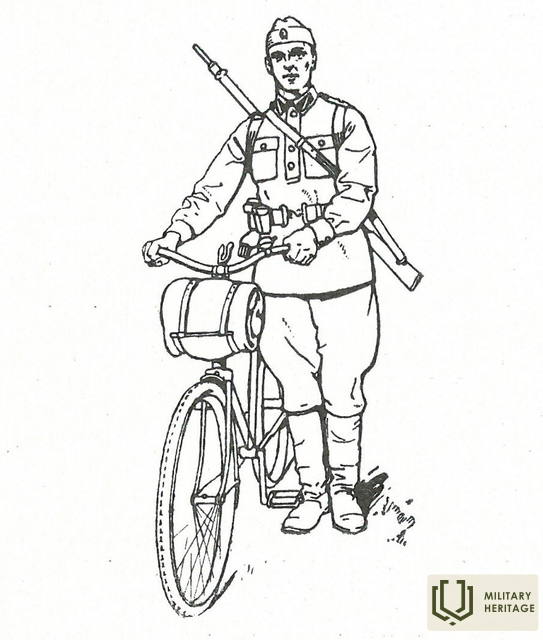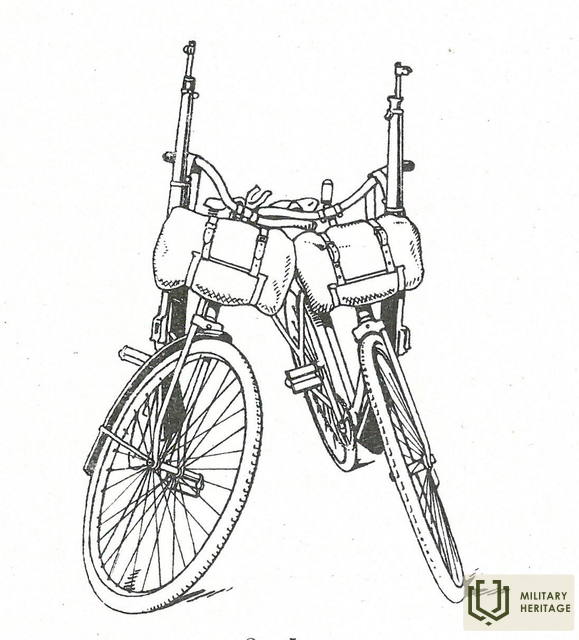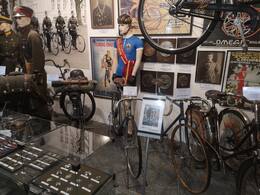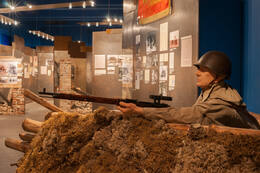Particular remarks in the care of cyclists
The recommendations mentioned in the regulations for the training of cyclists are provided during the training of cyclists in the Latvian Army. The recommendations focus mainly on the health of the soldier.
Special remarks for cyclist health care:
At the end of the training period for young soldiers, the doctor must carry out a medical examination of the soldiers who cannot bear the long journey. If, according to the doctor's opinion, the soldiers are not suitable for cycling echelons and if they cannot be used for motorized echoes, they must be transferred to other units.
Proper health care increases the performance of cycling units
When making a move, order the necessary relief in the outfit to be given as early as possible at the beginning of the move.
Cyclists' clothing and harness must be adapted so that they do not interfere with the circulation of body blood.
More frequent cold washing before and after driving protects the feet and hips from abrasion (when walking in the warm season).
It is forbidden to drink alcohol before the march, during the march, as well as immediately after the march ends.
You don't have to start on an empty or full stomach.
Muscle cramps can be prevented by massage. Cramps in the arms and legs, if the cyclist does not have enough training, if the saddle of the bicycle is not fitted correctly, if the cyclist holds the handbrake for a long time or keeps the handlebars in the same place at all times, if the cyclist's clothing is tight and uncomfortable. Too tight pants or panties cause sharp pain in the knees and leg muscles.
If a cyclist exceeds his / her endurance limits, he / she will have a fast and uneven heartbeat, as well as difficulty breathing.
If a cyclist experiences general weakness with shivering, cold sweat, a pale face, difficulty breathing, a feeling of suffocation and a fast and uneven heartbeat - the cyclist should lie down, unbutton the suit and be given a small amount of coffee or tea; after a short rest, the lost forces will return to the cyclist.
In the case of sunstroke, the provisions of the Rules of Procedure of the Internal Service must be observed.
Particular attention should be paid to cyclists during breaks. You can only swim if the cyclist has cooled down sufficiently and his heart rate has returned to normal.
Cycling training regulations. Riga: Army Headquarters Training Division, 1940.
Related timeline
Related objects
Exposition of military bikes in the Bicycle museum in Saulkrasti
The Bicycle Museum is located in Saulkrasti not far from the A1 highway and the railway station Pabaži, near the White Dune. Museum’s collection is made up of technically the most interesting examples of bicycle development history in Latvia. It is the largest bicycle collection in the Baltics with about 60 bicycles made and used in Latvia, including army-type bicycles. In the beginning of the 20th century many armies started to widely utilise the availability and benefits of bicycles. Special bicycle units were formed because of their mobility. Bicycle units were able to gather intelligence and launch unexpected attacks more easily, and were more mobile than regular infantry when it came to operations over a wide area. After World War I the Latvian Army also had bicycle units who used Latvian-made army bicycles. Any soldier who was in such a bicycle unit had to meet strict requirements. Good stamina, eyesight and hearing, as well as a healthy heart and lungs were a must. They could not weigh less than 80 kg and their height had to be 165-180 cm. The standard in the Latvian Army was that a well-trained cyclist should be able to cover 80-100 km in day, and up to 150 km in forced conditions. In winter, when bicycles could not be used, skis were used. A soldier from a bicycle unit had to be able to ski 50-60 km per day. Many soldiers from bicycle units would later become professional athletes.
We have about 5000 visitors every year.
Latvian War Museum
The Latvian War Museum is located in the Old Town not far from the Freedom Monument in a historic defence building called the ‘Powder Tower’. There are 11 exhibits in the museum. There are various weapons, documents, uniforms, awards, badges and other items detailing the everyday life of a soldier in war. The Latvian War Museum is one of the oldest museums in Latvia. Its origins can be found in World War I. Museum’s collection was made up mainly of personal items of soldiers or items found on battlefields. After Latvia gained its independence the main goal of the museum became to create an exposition on the military history of Latvia and the active role of the population in protecting their land. In 1937 the museum was expanded and was technically one of the most modern museums in Europe at that time. The Powder Tower was one of the fortification towers of Riga. Some evidence dates back to 1330 where it has been mentioned as the ‘Sand Tower’. The tower was destroyed in 1621 when Riga was besieged by the Swedish Army. But in 1650 a new tower for storing gunpowder and weapons was built. After the city’s fortifications were taken down, the Powder Tower remains as one of the most important pieces of evidence of the Riga defence system.








